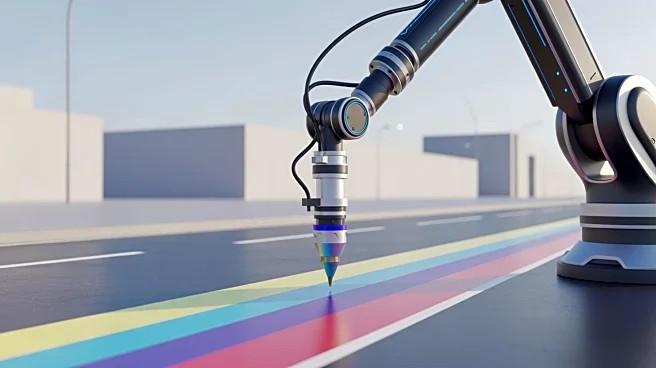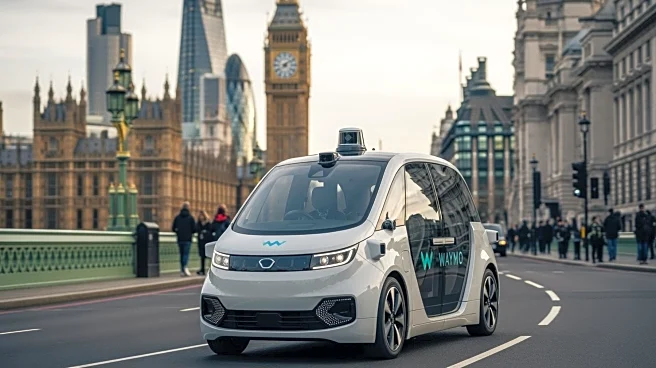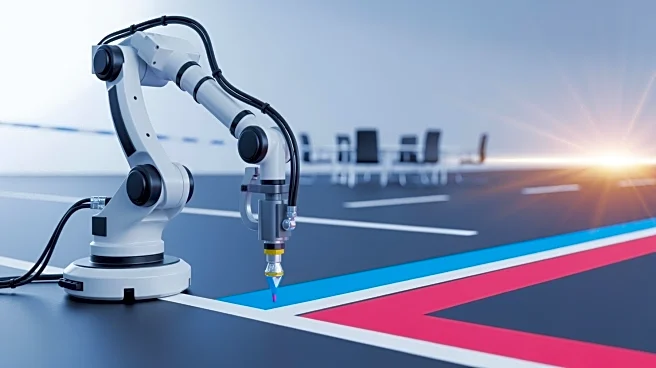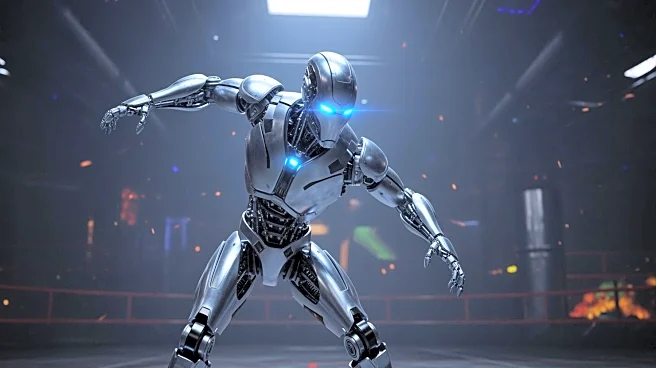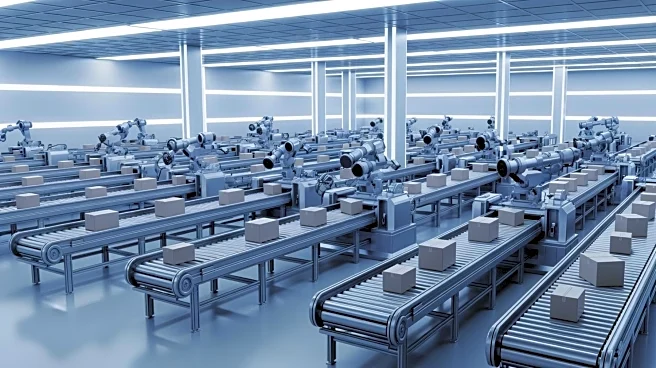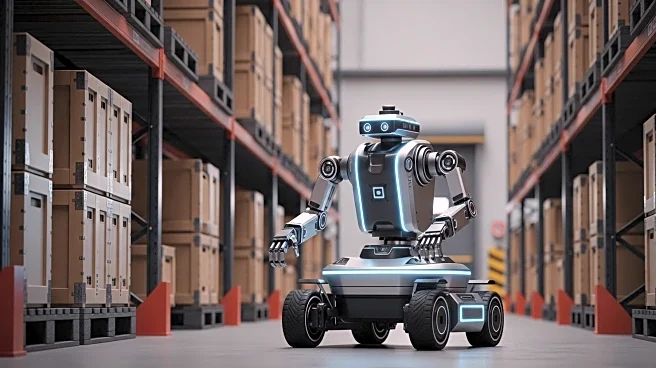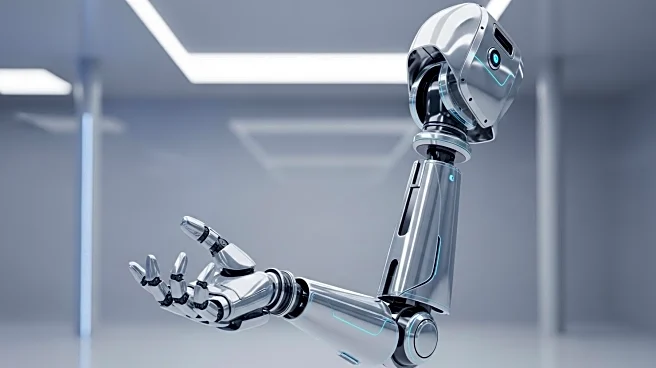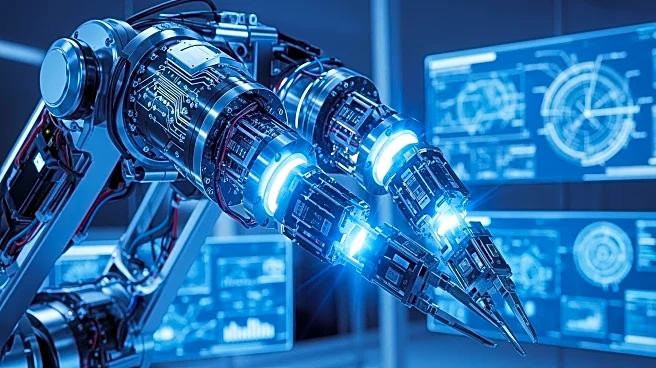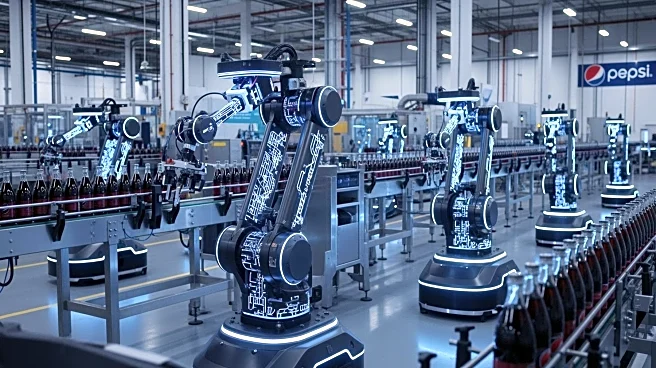What's Happening?
A Cleveland-based startup, RoadPrintz, has developed a robotic road-painting system that aims to revolutionize the application of crosswalks and traffic lines. The system, mounted on a Ford F-550 Super Duty truck, uses a robotic arm to paint various road markings,
including arrows and bike symbols, with precision and speed. This innovation eliminates the need for traditional stencils and manual labor, reducing the number of workers required and enhancing safety by minimizing their exposure to traffic. The system is preloaded with symbols and numbers compliant with the Manual of Uniform Traffic Control Devices, and operators can input custom messages as needed. RoadPrintz recently demonstrated the technology at their headquarters and reached an agreement to sell their first unit to the Missouri Department of Transportation.
Why It's Important?
The introduction of RoadPrintz's robotic road-painting system represents a significant advancement in the road maintenance industry, which has remained largely unchanged for decades. By reducing the number of workers needed for road marking tasks, the system enhances safety and efficiency, potentially lowering labor costs and increasing productivity. The Missouri Department of Transportation anticipates recouping its investment in the system within two years through labor and productivity savings. This technology could disrupt the traditional methods of road sign painting, offering a safer and more cost-effective solution for municipalities and transportation departments across the U.S.
What's Next?
As RoadPrintz continues to roll out its robotic road-painting system, other transportation departments and municipalities may consider adopting this technology to improve their road maintenance operations. The successful implementation in Missouri could serve as a model for other states, potentially leading to widespread adoption. Additionally, the company may explore further enhancements to the system, such as expanding its capabilities or reducing costs, to attract more clients and investors.
Beyond the Headlines
The development of this robotic system highlights the growing trend of automation in industries traditionally reliant on manual labor. It raises questions about the future of employment in road maintenance and the potential need for workers to adapt to new technologies. Furthermore, the system's ability to improve safety by reducing worker exposure to traffic could lead to broader discussions on workplace safety standards and innovations in other sectors.
